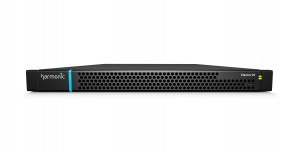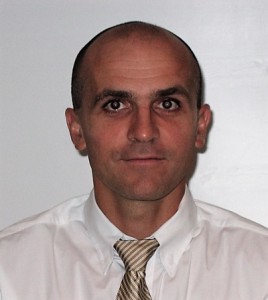SVG Europe Sit-Down: Harmonic’s Jean Macher discusses 360 degree experiences and unique uncompressed IP interoperability
Harmonic provides a wide range of video delivery solutions, from cloud-native media processing to software-based CCAP solutions, that power everything from emerging Ultra HD with HDR encoding schemes to cutting-edge multiscreen ecosystems to high-speed broadband delivery – making every type of media accessible on every type of screen. So, with such a comprehensive offering, there is much to discuss. But our discussion with Jean Macher, Harmonic’s director of market development, started an enquiry about an interesting declaration from the company.
Your company has stated “Harmonic is changing the way the world watches television”. Can you elaborate on that statement?
Video consumption has changed a lot over the last five years. Today’s viewers are watching video on multiple devices, including smartphones and tablets. Moreover, they’re looking for a more immersive experience with superior video quality.
Harmonic’s software-based video solutions are available as virtualised appliances or cloud-native applications; and can be deployed on premises, in the public cloud, or as a hybrid architecture mixing both. This level of flexibility enables video content and service providers to transform their operations and adapt to the changes happening across the industry. The end goal is to offer a better experience to their subscribers. With Harmonic’s software-based approach, video content and service providers can be the first in their market to offer advanced services, such as UHD-HDR, OTT, Virtual Reality (VR) and catch-up TV on every screen.
Tell us more about the delivery of immersive 360-degree, virtual reality (VR) experiences – especially with regards to sports?
Live sporting events are the perfect application for VR video because it makes the user experience so much more realistic and immersive. Currently, the industry is working to address several important issues that are holding back mass adoption of VR video, in particular, quality of experience (QoE) and bandwidth. Despite those issues, we’ve seen several Pay-TV providers successfully deliver 360-degree VR experiences during live sporting events.
Recently, Harmonic teamed up with Nokia and Ideal Systems to deliver stunning UHD VR live content during the 2017 Cathay Pacific/HSBC Hong Kong Sevens rugby tournament April 7-9. As part of a fully integrated VR workflow that included Nokia OZO cameras, Harmonic’s Electra VS video system enabled PCCW Global to distribute UHD VR content to consumers on a variety of devices, including PCs, smartphones and Samsung Gear VR head-mounted devices (HMDs).
What’s next for streaming UHD VR Video?
One of the initiatives the industry is working on now is how to improve the QoE on HMDs. VR tiling technology has emerged as an effective solution, enabling video content and service providers to transmit a complete UHD field of view. Working with Tiledmedia’s Tiled VR Streaming technology, Harmonic is helping to bring a better quality VR experience to viewers.
At the 2017 NAB Show, we demonstrated Tiledmedia’s Tiled VR Streaming technology integrated with the Harmonic PURE Compression Engine™, Viaccess-Orca’s Connected Sentinel Player for secure playback and Samsung Gear VR headsets. Through HEVC tiling technology and world-class compression, broadcasters and other content providers can deliver an immersive VR experience to head-mounted devices with the utmost efficiency and video resolution 10 times higher than that offered by existing, commercially deployed VR services.
At NAB you demonstrated unique uncompressed IP interoperability for a complete playout chain. Can you fill in more details?

Electra VS: Harmonic’s Electra VS video system enables UHD VR content to be distributed on a variety of devices
During NAB, we hosted and participated in a unique Alliance for IP Media Solutions (AIMS) interoperability demo with Arista, Embrionix, LAWO, Tektronix and Vizrt. This was one of the first times that uncompressed video over IP – SMPTE 2022-6 – interoperability for a complete playout chain that encompassed live sources; production graphics and video; network routing; support for monitoring and stream analysis; as well as playout and encoding for multi-platform was shown as a single, fully integrated system. Since the workflow featured live source inputs, complex graphics, network time sync, low-latency monitoring, playout with full CIAB capability, and broadcast encoding delivering emission-ready transport streams for terrestrial, satellite, cable and OTT delivery, attendees got a real sense of how an end-to-end all-IP workflow delivers real world practicality.
Having that many best-of-breed solutions working together shows that SMPTE 2022-6 is ready for primetime and also illustrates the importance of the AIMS industry initiative.
Where is Harmonic going with IP workflow – and what are the next innovations we can expect?
Harmonic will continue to work with AIMS and ecosystem partners to support interoperable IP interconnectivity. Our Spectrum™ X media server and Electra™ X2 media processor include both SDI and IP I/O on the same chassis, easing the migration to IP workflows.
Presently, a hot topic is the SMPTE ST 2110 standard, which is currently in its final draft. SMPTE ST 2110 is aimed primarily at live production environments. By allowing video, audio and data to be split and merged, as needed, throughout any workflow, it adds new flexibility, creates potential for new functionality and, in some cases, can simplify process workflows. Harmonic is often a receiver and source to environments where SMPTE 2110 will play an important role, so our encoding and playout products will be compliant.
Aside from the actual delivery of video and audio over a network, management of the available sources is important. This is where AMWA’s NMOS, also known as IS-04, comes into play. IS-04 provides a method for discovery and registration of streams on a network so that software or hardware devices that will use them can see what is available and whether they are compatible. This creates a dynamic environment for routing sources to destinations that can resolve themselves and stay current with active sources on the network.
How has the increase in multi-screen activities impacted your product development?
The growing consumer demand for OTT multiscreen services has led to a shift in video preparation and delivery workflows. We see that more and more, service providers are transitioning from traditional infrastructure to the cloud to increase agility, flexibility and scalability.
Harmonic is leading the transition to the cloud for media processing via its award-winning VOS™ Cloud software and VOS 360 software-as-a-service (SaaS) solutions. At the 2017 NAB Show, we introduced broadcast playout capabilities from our market-leading Spectrum™ media server to the VOS cloud offerings, including support for graphics, branding and digital video effects (DVE) for both file-based and live workflows. With these new capabilities, we’re enabling video content and service providers to launch broadcast and OTT offerings faster, increase their operational efficiencies and reduce OPEX and CAPEX.
In the area of OTT innovation, we’ve also demonstrated OTT bandwidth optimisation, low latency and CMAF packaging technologies that help operators deliver pristine SD, HD and Ultra HD video at low bit rates for a variety of services, including live streaming, VOD and time-shift TV.
We know that QoE is critical for OTT services, and our EyeQ™ video compression optimisation solution reflects our commitment to helping service providers deliver superior video quality while reducing the bandwidth up to 50 percent. Thanks to these innovations, OTT viewers can now enjoy the same QoE as with traditional broadcast.
Are there any innovative case studies you can share?
We recently announced that Globosat, Latin America’s largest content and programme creator, is using Harmonic’s Spectrum™ X advanced media server system and Harmonic MediaGrid shared storage system to establish a ground-breaking hybrid IP infrastructure. Pioneered for broadcast of a 24-hour Ultra HD channel during the Summer Games in Rio, Globosat expanded the use of Harmonic technology for playout and offline content management in the IP domain, maximising the efficiency of its production operations for a variety of programming. With this project, Globosat was one of the first to deploy an all-IP infrastructure for broadcast production of high-profile sporting events.
What’s especially unique about this project is that Globosat is using the Spectrum X media server system to bridge baseband and compressed interfaces, a functionality that is critical today, as most broadcasters are making an incremental shift away from existing SDI infrastructure toward all-IP infrastructures.

